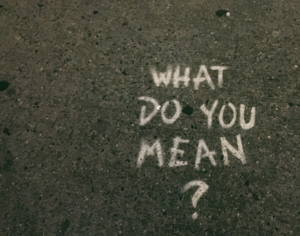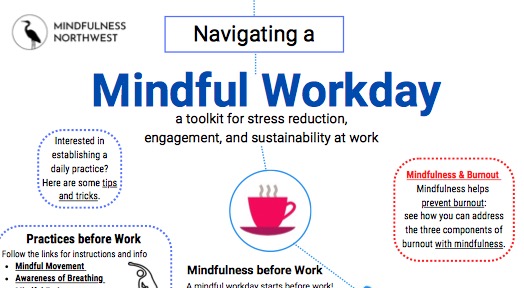Definition: Reification: to make something abstract more concrete or real; to consider or represent something abstract as a material or concrete thing; to give definite content and form to a concept or idea.

Photo by Tanner Vote, courtesy of Springfield Concrete Experts
We humans come equipped with an amazing mind – a mind that can solve problems, plan events, communicate with others, write poetry, design houses, compose music. These creative skills of our mind often serve us well in our work, home life, and play. However, sometimes our musings create artificial worlds that tell us false stories about ourselves or others. If we aren’t careful, we can be led into this false world and believe these fictional stories and conclusions about ourselves or others that are not based in reality. This is reification.
Why do we do this? I don’t know. It doesn’t seem like a positive pursuit. It’s as if our creative mind goes roaming around our memory banks and puts together a stream of thoughts. Perhaps it’s necessary to have many random thoughts for a few to bear fruit or insight? But this mental roaming is often colored by our negativity bias, and we write stories about ourselves, our partners, our friends, our world that create stress or dis-ease. We reify imagined terrible things about ourselves or others, catastrophic events that never happen, and stories about the behavior of others that can lead to mistrust. And these negative thoughts arise from our own minds, not from reality. We choose to believe them, we reify them.

Photo by Johannes Plenio
Happily, understanding that we do this can go a long way toward helping us avoid getting caught in the mire of reification. How?
First, with awareness – just knowing that everything our mind tells us is not necessarily true can get us over the hump. Second, with practice. Meditation practice. No matter what type, all meditation practices involve awareness of our thinking mind and offer a way to create space between “us” and “our mind.” All offer a way to help us understand that we are NOT our thoughts. Thoughts are thoughts. At times we get caught up in them and follow them down a rabbit-hole of reification. But with practice, we can recognize when our thinking mind takes us away from the truth of the present moment, and disengage from the story.
The power of reification was made very clear to me when I was mired in the stress of the end of my 30+ year marriage. During the first few months of adjustment, I often found myself lost in catastrophic thoughts about what was going to happen to me, what my life would be like, what I’d done to “fail” in this marriage. I’d also find myself pulled into thoughts about my ex – and these were very stressful – imagining what he was doing, where he was, who he was with. The power of practice helped me stop my thoughts “in mid-sentence” and say to myself, “You just made that up. That is a story. You don’t know what is going to happen to you. You don’t know what he is doing. Let it go, come back to the present.”

Photo by Justus Menke
Meditation practices that involve attention regulation are particularly helpful for bringing insight and control over reification. These practices fall into the category of “stabilizing” (or “concentration,” or “focused attention”) practices. In stabilizing practices, attention is kept on something specific. The stabilizing practices taught in the Mindfulness Based Stress Reduction (MBSR) course include Awareness of Breathing, Breath Counting, and the Body Scan.
Let’s look at the Awareness of Breathing (AoB) practice as an example of a stabilizing practice and explore how it can help us intercept reification. In AoB, the object of focus, or our anchor to the present, is one’s own breath. We train our focus on the sensations that are experienced as the body breathes. The goal is not to control the breath but to observe it and feel the sensations as the body breathes in, and as the body breathes out. Over and over. Notice what sensations are most vivid for you as you breathe – perhaps sensations of air being drawn into the body at your nose, or the rise of the chest, or the release of your belly during the inhale; perhaps the sensations of air leaving your body through the nose, or the settling of your chest or belly during the exhale. Let your attention land on this sensation, as you breathe in and out, over and over.

Photo by Aneta Pawlik
Normally, after just one, two, or three breaths, you’ll notice that your mind has pulled your attention away from the sensations of breathing. It’s as if the mind has gotten bored with the process, and you find yourself mired in planning your day or worrying about an upcoming meeting. This is a universal experience in meditation! When you recognize your altered focus, you are developing the skill of awareness of attention. This is the practice. When this happens, simply bring your attention back to the next breath. Each time you do this, your ability to recognize being lost in a thought gets stronger – first in the controlled environment of this formal stabilizing AoB practice, and then in day-to-day life.
Many have had the experience of a physical injury that requires physical therapy to restore function. For example, you injure your back while lifting furniture in your house. You go to physical therapy and with instruction, learn to use muscles to support better posture, and learn how to prevent repeat injury. You then practice the exercises at home, and (hopefully!) you incorporate your new skills of body support into your life to minimize future injury.

Photo by Sickk Vibes
Meditation works the same way as physical therapy: it is physical therapy for the mind. We learn an attention stabilizing practice (AoB), we practice it with support, and then on our own. From this practice we develop awareness of our thinking mind; we develop awareness of our own reification during practice. This awareness then extends into our daily life, and we learn to intercept the false stories of the mind before they concretize and we get carried away.
Beth Glosten, M.D.
–
Beth is a teacher at Mindfulness Northwest.
This article was part of our Practice Letter newsletter. If you’d like to receive this monthly publication in your inbox, please sign up here.

